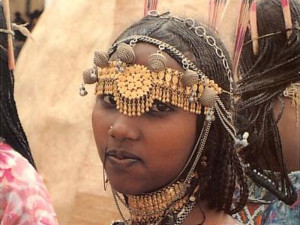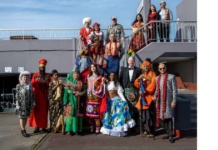The main abode for Saho people is Eritrea. However, there are also Saho tribes in Ethiopia. In Eritrea Sahos mainly live across eastern foot hills of Akeleguzai and Samhar region of Eritrea.
These areas are now renamed into two administrative regions known as (South) Debub in Tigrinia and Northern Red Sea region.
Saho history in Eritrea extends to thousands of years, if they are not the first, they definitely are among the country’s longest-established peoples. For over three thousand years of their known history, they have watched civilizations flourish and decay with their own lives. Unfortunately, no attempt has been made to document the very rich history and culture Saho’s are endowed with; either by Saho themselves or other interested scholars. Therefore, sources regarding social structure, mode of life, history and culture of Saho are at best scarce or nonexistent.
The information provided on this web is a modest attempt to bridge this gap, initiated by interested Saho individuals, with the aim of preserving Saho culture from being extinct and encourage Sahos’ and other interested scholars to take an active interest in assisting with efforts to document Saho heritage, history and culture.
Eritrea has yet to conduct national census to determine Eritrea’s population. Therefore, sources regarding estimate of Saho population is not based on evidence. However, it is acknowledged that Saho are the third largest ethnic group in Eritrea. Many Saho observers estimate Saho population as being a little over 10% of Eritrea’s estimated 3.1- 3.9 million inhabitants.
As we stated at the beginning of this article the overwhelming majority of Saho inhabit Eritrea but there are Saho tribes who reside along the border areas of Eritrea and Tigrai region of Ethiopia.
In Eritrea, Saho mainly dwell in the Eastern foothills of Akele-Saho (aka Akele-guzai) and Semhar occupying 60% or more of the landmass. Sahos’ are also found intermingled amongst Tigrinia speaking populace in parts of Eritrea’s highland regions (Akeleguzai, Seraye and Hamasein). They also intermingle with Tigre speaking tribes in Lowland regions such as Barka.
The social cohesion and organisation of Saho clans and sub clans is based on kinship and decent. The clans and sub-tribes trace their genealogical origin to a common ancestor. Tribes that belong to a common ancestor are defined as belonging to a common, Kisho, Mela or Are. Each sub-tribe is divided into numerous kinship groups known as Dik or Abusa, which usually bears the names of individuals, the founders of the lineage.
All Saho tribes share a common language, culture and way of life. However, not all Saho tribes have common origin or trace their lineage to a common ancestor. The earliest known Saho tribes, known as “Bado Ambalish” or bearers of land are believed to be; Kabota, Idda, Asa Bora, Gadafur etc.. These warrior tribes are now less prevalent and in some instances are almost extinct. The dominant Saho tribes today are perhaps conquerors of the earliest Saho tribes. However, the conquerors adopted Saho language and culture; other tribes came to settle among them in around 800-1000 A.C. to preach Islamic religion. They too gradually adopted the language and culture hence, became part of the fabric that make up Saho tribes of today.
Due to geographical position they occupy, significant of Saho speakers are bilingual. They commonly speak Saho & Tigrinya, Saho & Tigre or Saho & Afar and increasingly significant numbers of young people speak Saho & Arabic.










